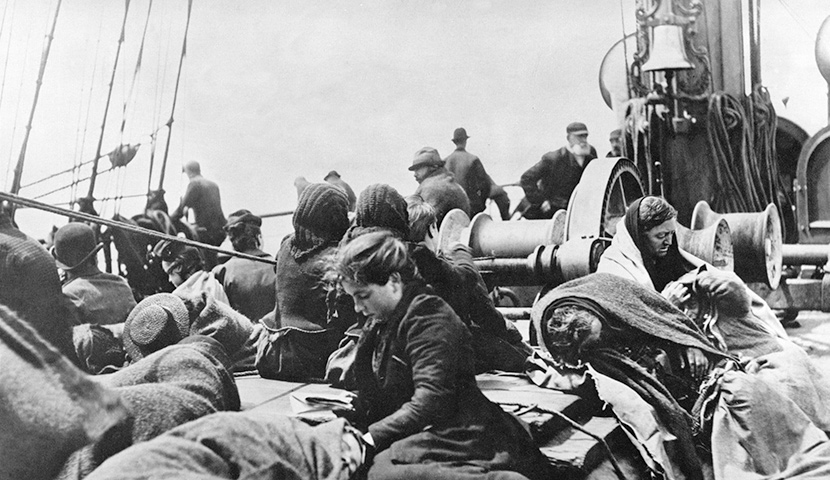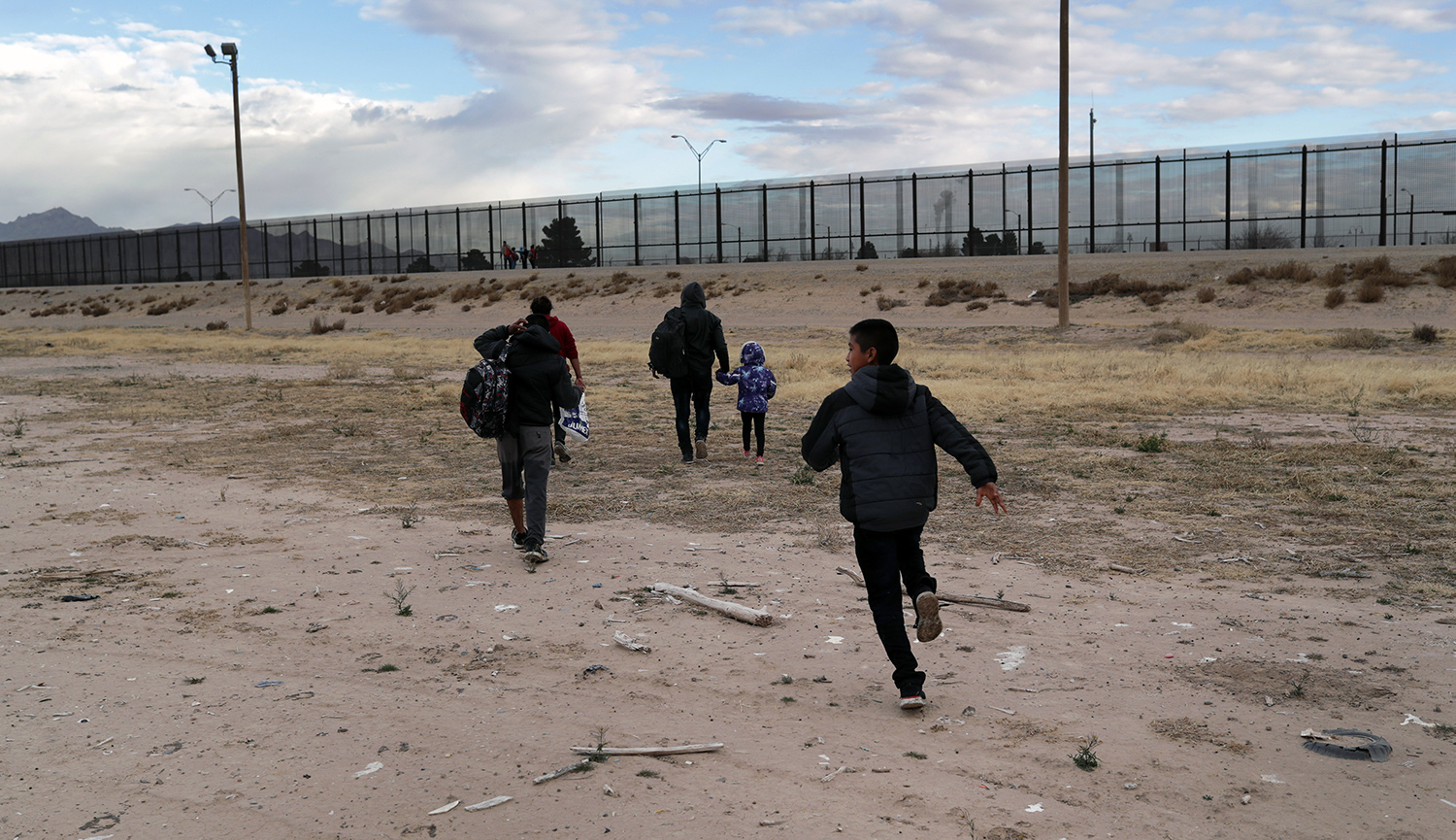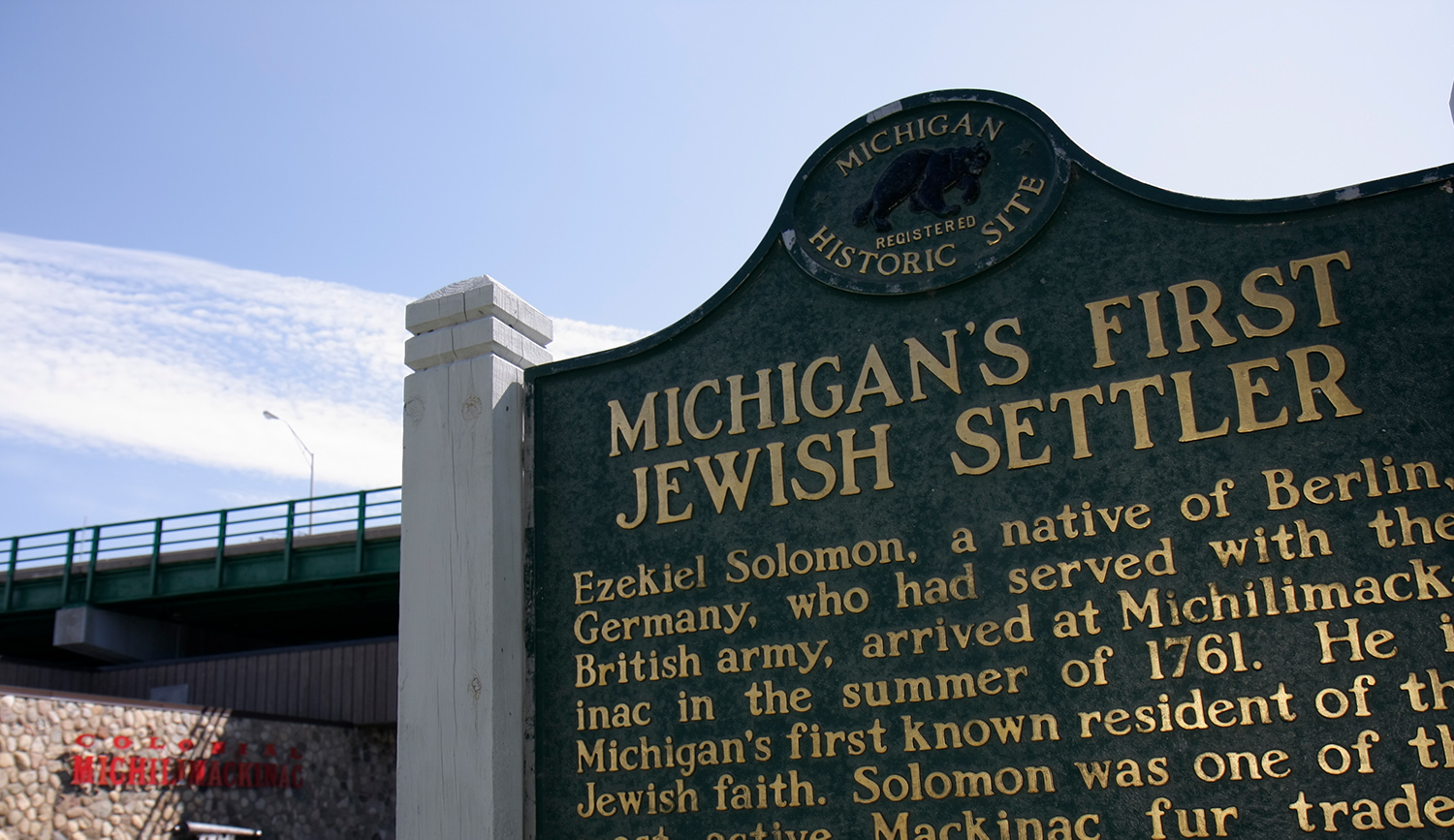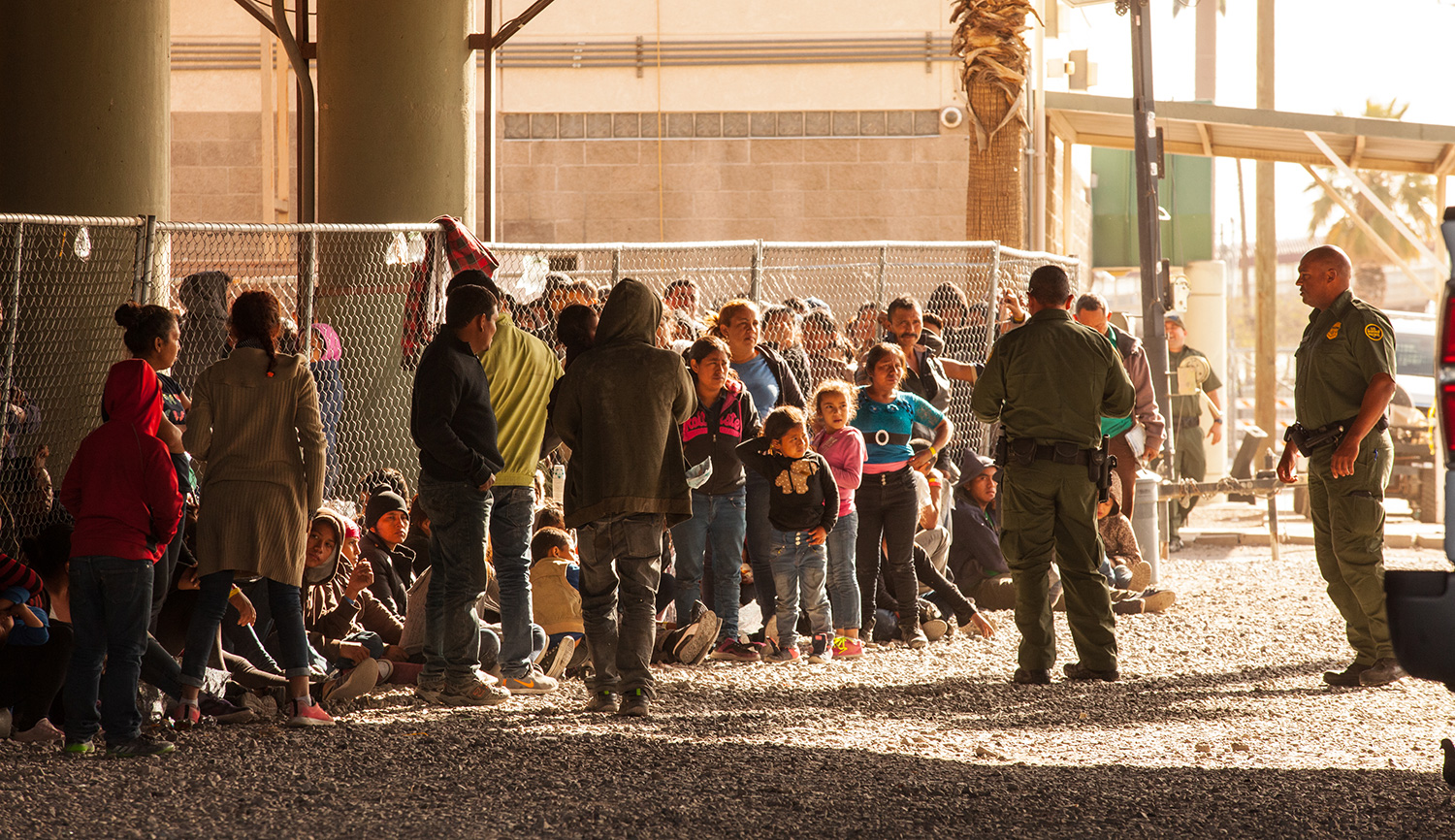Jews have a long and varied history of exile and migration: ancient Egypt and Babylon, medieval and modern Europe, Ellis Island, aliyah. In his recent essay for Mosaic, Nicholas M. Gallagher seeks lessons from this history that might guide us in addressing the mass population movements now turning the U.S. and the Western world upside-down. He may be looking in the wrong place.
In order to make sense of the present disorder, Gallagher addresses the distinction between migrants (those coming to a country to improve their lot in life) and refugees (those fleeing persecution or disaster). It is a distinction on which, officially at least, depend the lives of millions.
When Angela Merkel announced in the summer of 2015 that Germany could accommodate hundreds of thousands of refugees from the war in Syria, several hundreds of thousands more from Iraq, Iran, Afghanistan, Pakistan, and elsewhere in the Islamic world rushed to join them en route. When Merkel sought to distribute the uninvited new arrivals among the other 27 countries of the European Union, the continent’s politics grew strident.
Gallagher is correct that this distinction between migrants and refugees, while bureaucratically important, is conceptually unsound. Migration experts describe push factors and pull factors behind population movements. Generally, both factors are in play when any person decides to seek the proverbial “better life” elsewhere. The same person threatened with assassination in Syria in a way that makes him a refugee may also desire a good job in Italy in a way that makes him a migrant.
As for the legal and bureaucratic importance of the distinction, it comes from the 1951 UN Refugee Convention, in which the 145 signatories agreed that Europeans who could show cause for a “well-founded fear of being persecuted” had the right not to be sent back to their home countries. The United States did not sign it. A 1967 protocol, which the U.S. did sign, extended the provisions of the 1951 convention both horizontally (that is, they now applied to all countries) and temporally (that is, they would automatically come into force in the event of any future episodes of persecution and flight).
It is easy to overstate the direct connection of this refugee program to the alarm raised by the horrors of World War II. By 1951, six years after war’s end, the resettlement of displaced persons, as they were then called, had largely been completed. Instead, the convention was meant to handle the ongoing but narrow problem of stateless individuals, perhaps a dozen of them at a time, perhaps a hundred—but not boatloads, not millions, let alone the hundreds of millions who might pour out of fast-growing Africa between now and mid-century.
In other words, the convention was not designed for an age of mass refugee crises. Now that we face such crises, the convention and its 1967 protocol do much to exacerbate them. To immigration advocates, they give a Battle-of-Kursk-sized club to bring to a City-Hall-sized legal conflict. And their universally applicable strictures create the conditions for an outright delegitimation of national migration systems. As the demographer Gunnar Heinsohn has noted, when the planet’s most violent societies explode, they produce not only migrants but also the grounds for those migrants to claim residence in the planet’s richest societies.
Jews have long stood in Western culture as the archetype of a “wandering” people. Gallagher quotes enough of Robert Chazan’s argument in Refugees or Migrants, a new book on Jewish population movements, to show that this understanding runs through Jewish culture as well. It is marked, moreover, by a similar tendency to confound flight and migration. But to the question asked in the title given to Gallagher’s essay—“Does Jewish History Have Anything to Say About America’s Immigration Mess?”—the answer must be: no. At least not anything special.
Let’s address that question first from a “refugee” perspective—that is, the perspective of one seeking protection. Though it is tempting to link the horrors undergone by Jews in the mid-20th century to the UN protections passed just a few years later, those horrors, in most cases, involved not deportation but murder. Then, after the war, thanks to an efficient diplomatic process and, above all, the establishment of the state of Israel, Jews were sufficiently well-looked after as to render the conventions of little relevance to them. (Indeed, far from being used to protect Jews, they would be used by many UN members after the 1967 Six-Day War as a tool to attack the legitimacy of the Jewish state.)
Now let’s look at the question from a “migrant” perspective—the perspective of one seeking opportunity. Here several of Gallagher’s judgments appear questionable, especially the idea that Jews in any way “led” the late-19th-century “Great Wave” of European migration to America. To the contrary, one of the reasons for what Gallagher calls the “accepting, . . . even welcoming” attitude displayed by Americans toward Jews may have been that Jews were migrants just like everyone else—Polish, Irish, Italian, and so forth—passing through the common initiation of seasickness, crowded tenements, and sweatshops.
They had, however, two fortunate differences: they were (or became) highly qualified to contribute to society in every way, and comparatively speaking, there weren’t too many of them. Not since biblical times have there been Jews in sufficient numbers to overrun an existing culture as, for instance, the Irish did in Calvinist/Unitarian Boston. In that sense, they were not a threat to anyone.
Gallagher appears to forget this. When he looks at migration to Israel, where some of the same dynamics were in play, he treats Israel’s success not as something specific to Jewish migrations but as the result of an attitude toward immigration that might be replicable elsewhere. “Precisely because these immigrants were wanted by their fellow Jews for more reasons than just pity, many were able to build new lives fairly quickly,” he writes, calling this “the prime example of the hybrid refugee/migrant phenomenon.”
It is an inspiring story, but until you can come up with a way of generating the kind of solidarity that exists among coreligionists, it’s not an example of anything larger. In fact, it is almost sui generis: by Israeli law, Jews everywhere have the right to settle in the Jewish state and gain citizenship there.
If there is any lesson here for the United States and other big Western nations, it may involve becoming pickier, a bit more mindful of whether the newcomers being admitted in their millions are likely to fit in with the people already here. Given our current immigration system, that is going to be very hard to do.
The problem is not merely one of reflexive political correctness, although there is plenty of that to go around. The problem is partly demographic. At one point in his essay, arguing for cutting down on the numbers of unskilled immigrants admitted and favoring the skilled, Gallagher assures prospective critics that such “a shift to emphasizing skilled immigration would not mark a return to a Eurocentric system.”
Of course it wouldn’t! Have you noticed the rate at which the European population is falling? A promise not to build the American population out of Europeans is like a promise not to build kitchenware out of ivory—the resource required is so rare as to render the project fanciful.
In any case, the choice is not between European immigration and non-European immigration but between high immigration and low immigration. Americans in recent decades have said by overwhelming democratic majorities that they prefer the latter. That has proved unsatisfactory to judges and regulators. And this is where the distinction between migrant and refugee is meaningful—not as a description of sociological reality but as a set of legal tricks for keeping the door of immigration open at a time when Americans and Europeans want it, if not shut entirely, then at least well-latched and heavily guarded.
More about: History & Ideas, Immigration, Politics & Current Affairs







